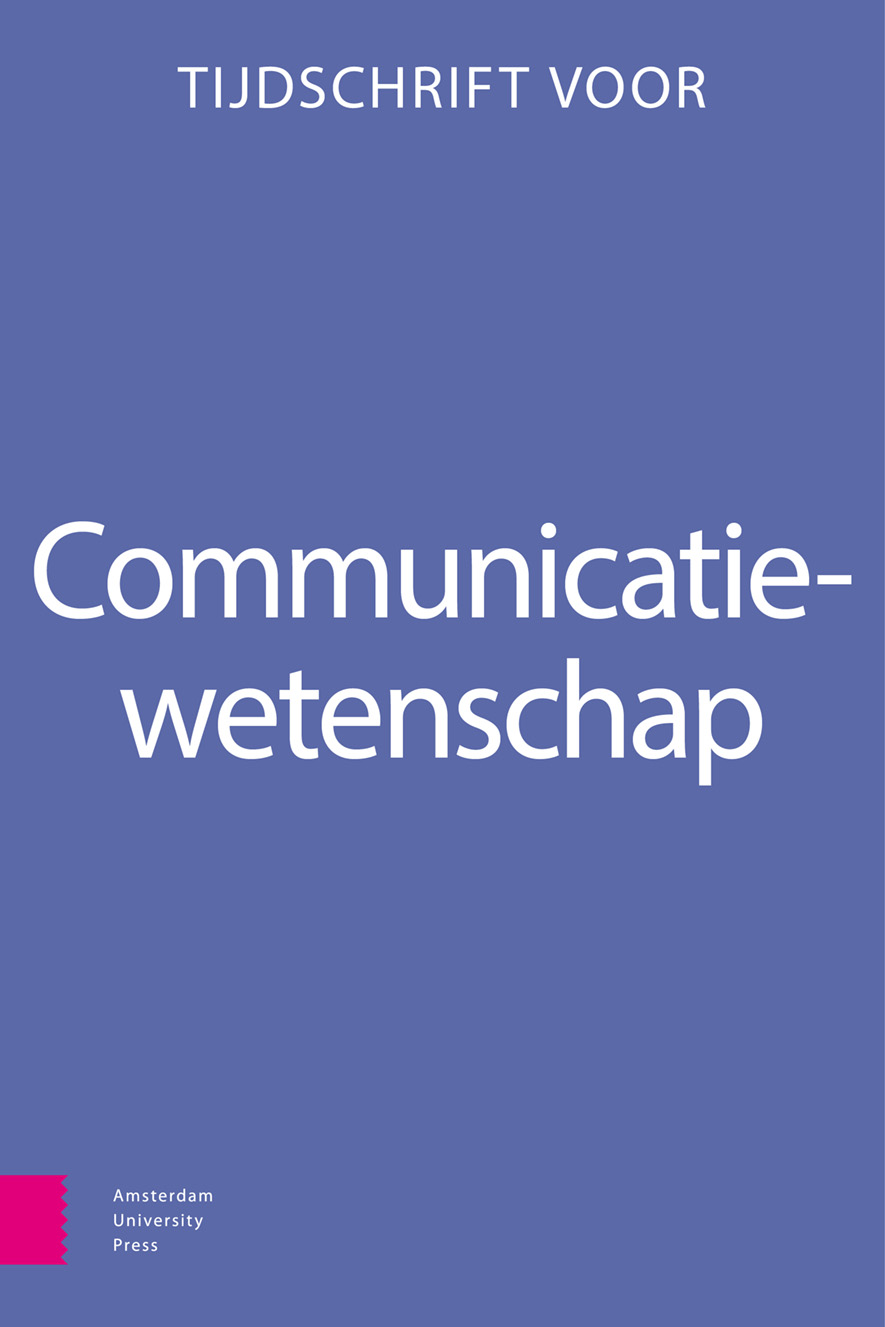- Home
- A-Z Publications
- Tijdschrift voor Communicatiewetenschap
- Previous Issues
- Volume 43, Issue 2, 2015
Tijdschrift voor Communicatiewetenschap - Volume 43, Issue 2, 2015
Volume 43, Issue 2, 2015
Language:
Dutch
-
-
Forumartikel: Rapport Project X Haren revisited
More LessAuthors: Peter Vasterman & Huub WijfjesProject X Haren research revisited. A critical analysis of the research project about the role of the media in the Facebook riots in September 2012 Project X Haren research revisited. A critical analysis of the research project about the role of the media in the Facebook riots in September 2012 In September 2012 the Dutch town of Haren witnessed a real-time version of a Project X party, starting with a Facebook event page and Read More
-
-
-
Reactie op forumartikel ‘Rapport Project X Haren revisited’
More LessBy Jan van DijkVasterman en Wijfjes hebben ons rapport De weg naar Haren gedetailleerd op de snijtafel ontleed. Veel van hun kritiek is nuttig voor de discussie over de rol van de sociale en traditionele media in sociale bewegingen en mobilisaties, de relatie tussen sociale en traditionele massamedia en het verschijnsel mediahype bij deze relatie. Hun evaluatie dat over de kwaliteiten van het onderzoek het nodige valt af te dingen is echter o Read More
-
-
-
Participatie, jongeren en de publieke omroep
More LessAuthors: Anne-Sofie Vanhaeght & Karen DondersParticipation, youngsters and public service media projects. Carte Blanche (VRT) and BNN University (NPO) Participation, youngsters and public service media projects. Carte Blanche (VRT) and BNN University (NPO) This article analyses whether and to what extent public broadcasters have been able to transpose concepts like interaction, co-creation and participation into day-to-day media service delivery. The article theoret Read More
-
-
-
Van politiek centrum Binnenhof naar Albert Cuypmarkt
More LessAuthors: Mariska Kleemans, Gabi Schaap & Liesbeth HermansFrom political centre Binnenhof to the Albert Cuyp street market: a longitudinal analysis of sources in television news From political centre Binnenhof to the Albert Cuyp street market: a longitudinal analysis of sources in television news Since the 1990s, many have argued that journalists should focus less on elite sources and more on alternative sources as news definers. It is however unclear whether they succeed in doin Read More
-
-
-
Demografische diversiteit in het Vlaamse perslandschap
More LessAuthors: Hanne Vandenberghe, Leen d’Haenens & Baldwin Van GorpDemographic diversity in the Flemish press Demographic diversity in the Flemish press This study analyses the diversity of the Flemish news by looking at demographic diversity, i.e. the extent to which gender, age and ethnicity in society are proportionally represented in the news. In a constructed week (April-May 2012) (N = 4,800) 12,743 persons were mentioned, each of them were assigned to age groups, man or wo Read More
-
-
-
Spreadable media. Creating value and meaning in a networked culture. Henry Jenkins, Sam Ford & Joshua Green (2013). New York, NY: New York University Press.
More LessDaan Muntinga volgt Nathalie Sonck op als nieuwe book editor binnen de kernredactie van Tijdschrift voor Communicatiewetenschap.
-
Volumes & issues
-
Volume 53 (2025)
-
Volume 52 (2024)
-
Volume 51 (2023)
-
Volume 50 (2022)
-
Volume 49 (2021)
-
Volume 48 (2020)
-
Volume 47 (2019)
-
Volume 46 (2018)
-
Volume 45 (2017)
-
Volume 44 (2016)
-
Volume 43 (2015)
-
Volume 42 (2014)
-
Volume 41 (2013)
-
Volume 40 (2012)
-
Volume 39 (2011)
-
Volume 38 (2010)
-
Volume 37 (2009)
-
Volume 36 (2008)
-
Volume 35 (2007)
-
Volume 34 (2006)
-
Volume 33 (2005)
Most Read This Month
Article
content/journals/13846930
Journal
10
5
false
en


